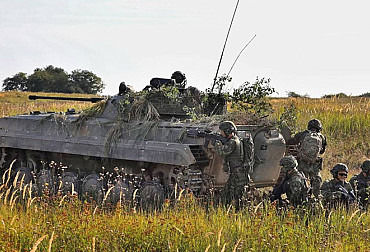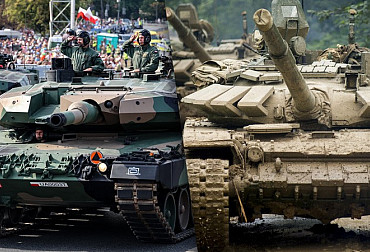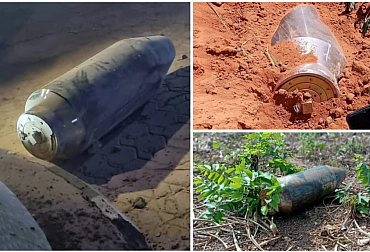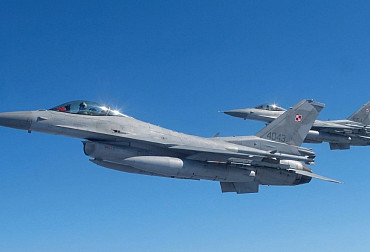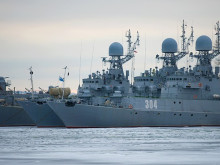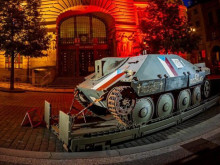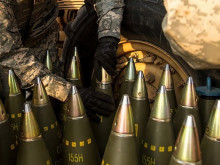Leopard 2A8 as a great opportunity for the Czech defence industry
A few days ago, the contract was signed as part of a significant acquisition not only for the Czech Air Force, but also for the entire army. It is the purchase of 24 F-35 5th generation aircraft. The second planned major acquisition, in the form of the purchase of up to 80 Leopard 2A8 tanks, will complete the renewal of the armament of the 73rd Tank Battalion and thus also the 7th Mechanised Brigade. The acquisition of tanks should be accompanied by significant industrial cooperation of a truly international nature.
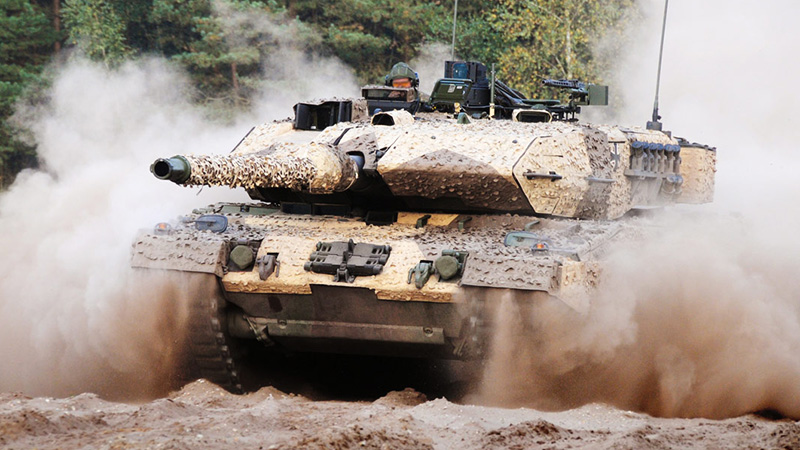
We have already written several times on CZ DEFENCE about whether Leopard 2 tanks are a suitable type of MBT (main battle tank) for the 73rd Battalion of the Czech Army. In the words of a classical scholar, the Leopard 2 is in the arsenal of many NATO members (Czech Republic, Denmark, Finland, Canada, Hungary, Germany, the Netherlands, Norway, Poland, Portugal, Austria, Greece, Slovakia, Spain, Sweden and Turkey) and is the only tank currently in production in Europe. In the past, there have also been considerations of acquiring American Abrams tanks or South Korean K2 Black Panther tanks, but currently the Czech Ministry of Defence is in talks with Germany to jointly purchase new Leopard tanks, in the 2A8 version.
The Leopard tanks are currently undergoing an extremely sharp test in the form of deployment in Ukraine, where in various versions they are helping the Ukrainian army to repel Russian aggression. The experience can basically be summed up by saying that advanced Western technology also needs advanced Western maintenance logistics, highly trained crews and background personnel, and the most effective tactical synergy with other weapons types for long-term reliable operation. Ukraine is receiving different versions of these tanks from different countries and is learning to deploy them in the conditions of an ongoing existential struggle and in an extremely challenging situation, when a very diverse range of equipment of different origin and purpose has entered its arsenal. In addition, Ukraine is faced with the mass deployment of new technologies that are in fact yet to be comprehensively evaluated, and the resulting measures in terms of adjusting the doctrines of tank deployment on the modern battlefield.
This is a fact that should be borne in mind when monitoring the various more or less substantiated reports of losses of Western-origin main battle tanks, including Leopard 2 tanks, on the Ukrainian battlefield. What stands out in this regard, then, is the information that even when a tank is somehow knocked out of combat, often by drone attack, standby ammunition, anti-tank missiles or heavy artillery, the crews inside the stricken machine manage to survive.
Meanwhile, the A8 version of the Leopard 2 tanks, which the MoD is currently negotiating with Germany to acquire, continue to enhance the already high resilience and reliability of the Leopard 2 tank, in particular by integrating the Trophy active protection system and improving the systems that provide situational awareness for the tank crew. Although there has been talk for some time about next-generation main battle tank projects, and some have already reached the stage of very concrete deliverables, such as Rheinmetall's Panther KF51 tank, it is more than certain that the Leopard 2, and specifically its latest version, will be the backbone of NATO's European armies' tank armour for many years or decades to come.
The Leopard 2 tanks also contribute significantly to the ability to deter a potential attacker thanks to their parameters and capabilities. Moreover, the armies of NATO member states would be in a disproportionately better position than the Ukrainian army in the event of an attack on an Alliance member state. In addition to the large number of Leopard 2 tanks (often in more modern variants than Ukraine's) that NATO countries have at their disposal, and the long experience with their operation, which is reflected in the quality of crew training, mutual interoperability and unit compatibility, this initial situation is mainly due to the proven and efficient maintenance logistics, whose centres already exist (and thus do not need to be provisionally established) and are more accessible in terms of infrastructure. This situation can then be further strengthened, in particular through the expansion of the Leopard tank users' club, LEOBEN, which shares operational, maintenance and deployment experience and, last but not least, the necessary resources and spare parts.
Closely related to this is the issue of potential involvement of the Czech defence industry, not only in the procurement of 2A8 Leopards for the Czech Army. It would be inefficient to try to get the Czech industry to largely produce the 77 tanks for its own army. While this is a respectable number from the Czech perspective, it is still very small from a general point of view. More interesting and, above all, more promising in the long term will be the participation of Czech industry, which will involve our domestic companies in the production or modernisation of Leopard 2 tanks in general, i.e. for any order of any allied or partner country.
Such a "fragmentation" of production will then bring more opportunities for all and at the same time it will also be important from the security point of view, when in a possible conflict (on the modern battlefield we can observe a significant deployment of various ballistic missiles or cruise missiles) it will not be easy for a potential enemy to disable the production, maintenance and repair of heavy combat equipment or tanks by a massive attack aimed at one central location. Moreover, future international cooperation between companies involved in the production of the Leopard 2A8 will also be an opportunity in terms of the possibility of developing and subsequently producing aggregates for these new generation tanks.
The Czech defence industry, which is already gaining valuable experience with modern tracked armoured vehicles thanks to the CV90 project, would thus gain a new impetus by renewing its capabilities in the field of tracked vehicles in addition to its ability to develop and produce high-quality wheeled platforms. Moreover, given the fact that Czech companies are largely oriented towards demanding and innovative technologies, this should not simply be a matter of assembling or welding sheet metal. On the contrary, the range of partnerships in this future chain can be very diverse and can cover the full spectrum of systems that characterise a modern main battle tank such as the Leopard 2A8 today.
















